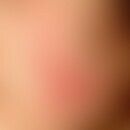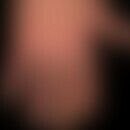Synonym(s)
DefinitionThis section has been translated automatically.
Frequent abnormal tissue reaction occurring in persons with the appropriate disposition, with reversible and very changeable inflammatory skin changes, which can occur even with moderate exposure to cold.
EtiopathogenesisThis section has been translated automatically.
Mostly vegetatively disturbed vascular function with lack of adaptation to external temperature conditions (outside temperatures little above 0 °C, especially in wet and cold climates, also in cold and damp work, e.g. in butchery professions), but also in local or systemic infections (tuberculosis patients).
The occurrence of perniones has also been described after COVID-19 vaccination (Freeman EE et a.2020).
You might also be interested in
ManifestationThis section has been translated automatically.
Occurs mainly in female adolescents or adults with acrocyanosis. Frequently there is general obesity or pasty habitus. Seasonal accumulation mainly in spring and autumn. Occurrence in connection with occupational exposure to cold (butchers, cold store workers, soldiers) or in homeless people is not uncommon. Increasingly, frostbite is occurring among alpinists.
LocalizationThis section has been translated automatically.
Dorsal sides of the fingers and toes, nose, lower leg, knee area.
ClinicThis section has been translated automatically.
Notice! An apparently healthy red complexion can be an expression of chronic cold damage.
HistologyThis section has been translated automatically.
Differential diagnosisThis section has been translated automatically.
Complication(s)(associated diseasesThis section has been translated automatically.
External therapyThis section has been translated automatically.
Internal therapyThis section has been translated automatically.
- Systemic therapy can be considered in the case of very pronounced clinical symptoms, e.g. with interval therapy with iloprost (0.5-2.0ng/kgKG/min.
- Furthermore, a trial with pentoxifylline (e.g. Trental) 2 times/day 400 mg p.o. can be initiated.
Progression/forecastThis section has been translated automatically.
ProphylaxisThis section has been translated automatically.
Phytotherapy externalThis section has been translated automatically.
Benedictine herb used to be used externally, see Cnici benedicti herba,
in empirical medicine also Fagopyri herba and Ratanhiae radix
Note(s)This section has been translated automatically.
LiteratureThis section has been translated automatically.
Freeman EE et al. (2020) Pernio-like skin lesions associated with COVID-19: A case series of 318 patients from 8 countries. J Am Acad Dermatol 83:486-492.
Gomes MM et al (2014) Perniosis. BMJ Case Rep doi: 10.1136/bcr-2014-203732
Johnson-Arbor K et al (2014) Digital frostbite. N Engl J Med doi: 10.1056/NEJMicm1310126
- Kemper TC et al. (2014) Frostbite of both first digits of the foot treated with delayed hyperbaric oxygen:a case report and review of literature. Undersea Hyperb Med 41:65-70
- Müller M et al (2007) Recurrent perniosis due to congenital acrocyanosis. Dermatology in Occupation and Environment 55: 28-34
Ohatee MA et al. (2014) "Salt ice dare": a previously undescribed
mechanism of rapid frostbite injury. J Plast Reconstr Aesthet Surg 67:e248-249
Incoming links (7)
Cnici benedicti herba; Cutaneous vaccination reactions; Fagopyri herba ; Matricariae flos; Populi gemmae; Quercus cortex; Ratanhiae radix;Outgoing links (20)
Acrocyanosis; Autumn perniosis; Chilblain lupus; Clobetasol-17-propionate; Clobetasol propionate cream hydrophilic 0.05% (nrf 11.76.); Cnici benedicti herba; Cutaneous vaccination reactions; Dermis; Edema; Erythema multiforme, minus-type; ... Show allDisclaimer
Please ask your physician for a reliable diagnosis. This website is only meant as a reference.








